#bim model as-built documentation
Explore tagged Tumblr posts
Text
Unlocking Building Potential with As-Built 3D Models

Experience the power of accurate and detailed building information with as-built 3D modelling. Unlike traditional 2D drawings, 3D models provide a holistic view of building systems, equipment, and infrastructure. This empowers facility managers to make informed decisions, optimize operations, and reduce costs. Discover how as-built 3D models, coupled with BIM level of detail 500, can transform your facility management approach. (Can you add 2 to 3 paras within it & provide a image points as per topic).
As-built models are a powerful step towards transforming your projects. These accurately captured detailed models provide an unparalleled representation of existing structures. As-built models help convert complex-built data into clear actionable insights. Unlike traditional 2D drawings, 3D models provide a holistic view of building systems, equipment, and infrastructure. By visualizing every aspect of the facility you can make informed decisions, spot opportunities for improvement, and address potential issues before they escalate.
As built models in construction not only streamlines your design and renovation processes but also ensures precision and efficiency at every phase in the project lifecycle. As built drawings in facility management serve as the foundation for effective building operations and maintenance. They provide facility managers with a precise record of the facility's layout, systems, and components, etc. This aids in planning for maintenance, renovations and space utilization more effectively. This empowers facility managers to make informed decisions, optimize operations, and reduce costs. Discover how as-built 3D models, coupled with BIM level of detail 500, can transform your facility management approach.
#bim model as-built documentation#as-built model#as-built modeling#as built model#mep facility management#USA#Architect
0 notes
Text
3D Building Scanning for Accurate As-Built Plans in the USA

The Architecture, Engineering, and Construction (AEC) industry in the United States is entering a new era of precision and efficiency. One technology leading this shift is 3D building scanning, a digital solution revolutionizing how professionals plan, design, and manage building projects.
What Is 3D Building Scanning?
3D building scanning uses advanced LiDAR or photogrammetry to capture precise spatial data of an entire structure. It generates a detailed point cloud, which is then converted into as-built drawings, 2D floor plans, or BIM models using software like Autodesk Revit, AutoCAD, and Navisworks.
This technology provides highly accurate, real-world geometry that supports smarter decisions throughout the project lifecycle—from preconstruction to facility management.
Why AEC Firms in the USA Are Adopting 3D Building Scanning
✅ 1. Generate Accurate As-Built Documentation
Outdated blueprints and site conditions are a common challenge, especially in renovations. 3D scanning enables contractors and architects to work with true-to-site digital data—reducing design errors and costly rework.
✅ 2. Accelerate Commercial Renovation Planning
Whether it's a retail remodel in Los Angeles or a warehouse retrofit in Dallas, scanning provides a complete building survey in hours instead of days. This fast, non-invasive method is ideal for occupied spaces or tight project schedules.
✅ 3. Seamless Integration with BIM Workflows
Point cloud data integrates directly into Revit for scan-to-BIM modeling, improving MEP coordination, structural planning, and clash detection—key for high-rise builds, healthcare facilities, and industrial environments.
✅ 4. Enhance Facility Management & Long-Term Operations
3D building scans produce digital twins that support asset management, space planning, and system upgrades for schools, hospitals, government buildings, and more.
Where 3D Scanning Adds Value
Commercial Real Estate Development Perfect for feasibility studies, tenant fit-outs, and property marketing.
Historical Building Documentation Protect and preserve architectural details with laser-precise digital archives.
Healthcare, Education, and Public Sector Projects Ensure safety and compliance with minimal disruption to ongoing operations.
Federal and Government Infrastructure Meet BIM mandates and improve accountability with accurate project data.
Technologies Behind 3D Building Scanning
The USA’s top scanning providers use tools like:
Leica BLK360 and RTC360
FARO Focus Premium
Trimble X7
Drone-based LiDAR and photogrammetry
SLAM-based handheld scanners
Each device is chosen based on site complexity, interior/exterior scope, and level of detail required.
Choosing a 3D Scanning Partner in the USA
Here’s what to look for when selecting a scanning provider:
Proven experience in AEC-specific workflows
Capability to deliver BIM-ready Revit models
File format support (E57, RCP, DWG, IFC)
Fast turnaround for time-sensitive projects
Fully trained field teams with safety certifications
Final Thoughts
Whether you're managing a multi-phase retrofit or preparing for a LEED-certified construction project, 3D building scanning provides the accuracy, speed, and digital insight today’s AEC teams demand.
From as-built surveys for architects to clash detection models for contractors, scanning empowers your project team to build smarter and avoid surprises.
📞 Need Help with 3D Building Scanning for As-Built Documentation or Scan to BIM Modeling? Talk to experienced professionals who understand the real-world challenges of construction, renovation, and facility management. Get a free quote or schedule a pilot project for 3D laser scanning services in the USA, including point cloud to Revit conversion, as-built floor plans, and scan-to-BIM for commercial buildings.
#3d laser scanning#laser scanning#architecture#building design#building information modeling#gis#3d scanning#urban architecture#as built documentation#scant o bim#clash detection#construction
0 notes
Text
Scan to BIM – Everything You Need to Know

In today’s rapidly advancing construction and architectural landscape, the need for precision, accuracy, and efficiency has never been greater. One technology that has significantly transformed the way buildings are designed, constructed, and maintained is Scan to BIM (Building Information Modeling). By combining 3D laser scanning with BIM, Scan to BIM provides accurate, data-rich models that are indispensable in today’s construction, renovation, and facility management projects.
This article will provide an in-depth look at Scan to BIM, explaining what it is, how it works, its key components, and the benefits it brings to various industries. We’ll also explore how technologies like point cloud data and as-built documentation fit into the Scan to BIM process, and why this innovative approach is gaining traction in the architecture, engineering, and construction (AEC) sectors.
What is Scan to BIM?
Scan to BIM is the process of converting the real-world conditions of a physical space into a highly detailed, accurate 3D model. It involves capturing point cloud data from a site using 3D laser scanning technology and then using that data to generate a BIM model. This process bridges the gap between the physical and digital worlds, providing a precise digital representation of existing structures that architects, engineers, and contractors can use for various purposes such as design, renovation, facility management, and more.
The primary goal of Scan to BIM is to create as-built documentation—an accurate digital version of a structure or environment that reflects its current state. This is particularly valuable for renovation projects, where it’s essential to understand the existing layout, structure, and systems of a building.
The Role of 3D Laser Scanning in Scan to BIM
3D laser scanning is at the heart of the Scan to BIM process. This technology uses laser beams to capture precise measurements of a physical space, which are then converted into a point cloud—a collection of millions or even billions of data points that represent the structure’s geometry. Each point in the cloud corresponds to a specific location on the scanned surface, allowing the creation of a highly detailed 3D model.
Laser scanners capture data from multiple angles, ensuring that no detail of the structure is overlooked. This data can be collected quickly and with high accuracy, making it ideal for use in construction and renovation projects where precision is critical. The resulting point cloud data is then imported into BIM software, where it serves as the basis for creating a detailed, accurate model of the building or site.
Key Benefits of 3D Laser Scanning:
High Precision: 3D laser scanners capture measurements with millimeter accuracy, which eliminates the errors commonly found in manual surveying methods.
Speed: Laser scanning is a fast and non-invasive way to capture large volumes of data, significantly reducing the time required for site surveys.
Complete Data Collection: Unlike traditional methods, which might miss details, laser scanning provides a comprehensive data set of every part of the building.
Point Cloud Data: The Foundation of Scan to BIM
Once the 3D laser scanning is complete, the collected data is stored as a point cloud. This point cloud data represents the physical features of the scanned environment in three-dimensional space. Point clouds are created by compiling millions or billions of points (each representing a specific location on the scanned surface), creating a “cloud” that provides an accurate representation of the building or space.
In the Scan to BIM workflow, point cloud data is used to create the digital model. The software that processes the point cloud data can convert it into a usable 3D format, which can then be integrated into BIM software tools to build a detailed model of the environment. Since the point cloud is a direct reflection of the physical world, it ensures that the resulting BIM model will be a precise representation of the existing structure.
Key Benefits of Point Cloud Data:
Accuracy: Point clouds are incredibly accurate, capturing even the smallest details of the structure.
Flexibility: Point cloud data can be processed into various file formats that can be imported into different types of BIM software.
Real-World Representation: Point clouds provide a true-to-life representation of the physical environment, making them ideal for creating as-built models in renovation or retrofitting projects.
As-Built Documentation and Its Role in Scan to BIM
As-built documentation is the detailed record of a building or structure as it currently exists. In the past, creating accurate as-built drawings involved extensive manual measurements, which were prone to errors and often incomplete. Scan to BIM addresses this problem by using 3D laser scanning to create an accurate, digital representation of the existing building, making the as-built documentation process faster, more accurate, and more reliable.
In the Scan to BIM workflow, as-built documentation refers to the process of creating a BIM model from the point cloud data that accurately reflects the building’s current condition. This model can then be used for a variety of purposes, including:
Renovations and Retrofits: When renovating or updating a building, accurate as-built documentation is essential for understanding the existing systems and layout, ensuring that new designs integrate seamlessly with the old structure.
Facility Management: After construction or renovation, the as-built BIM model serves as a valuable asset for building owners and facility managers. It can be used to track the location of building systems (HVAC, plumbing, electrical) and manage maintenance tasks more efficiently.
Key Benefits of As-Built Documentation:
Accuracy: As-built models created through Scan to BIM ensure a high level of accuracy that traditional manual drawings cannot match.
Efficiency: Generating as-built documentation through Scan to BIM is much faster than traditional surveying, allowing project teams to move forward with design or renovation work sooner.
Long-Term Utility: As-built BIM models are valuable throughout the lifecycle of the building, offering a digital record that can be used for facility management, maintenance, and future renovations.
Scan to BIM Applications in Different Industries
1. Construction and Renovation Projects
Scan to BIM is widely used in renovation and retrofit projects. The accurate as-built models generated through 3D laser scanning help construction professionals understand the existing conditions of a building before starting work. This minimizes errors and rework, leading to faster project timelines and reduced costs.
2. Facility Management
Once a building has been constructed or renovated using Scan to BIM, the resulting as-built model becomes an essential tool for facility managers. It provides a detailed, digital representation of the building’s systems, which can be used to track maintenance schedules, manage equipment, and plan for future upgrades.
3. Historic Preservation
Scan to BIM is also a valuable tool in the preservation of historical buildings. Using 3D laser scanning, detailed records can be made of heritage structures, helping architects and preservationists create accurate restoration plans while maintaining the building’s historical integrity.
4. Infrastructure Projects
Large-scale infrastructure projects such as bridges, tunnels, and highways also benefit from Scan to BIM. The precision offered by 3D laser scanning ensures that the existing infrastructure is accurately captured and modeled, which can be used for maintenance, future upgrades, or expansion plans.
The Future of Scan to BIM
As technology continues to evolve, Scan to BIM is becoming even more powerful. Innovations such as drones equipped with 3D laser scanners, AI-assisted data processing, and integration with digital twins are transforming the way buildings and infrastructure are designed, built, and managed. The ability to create accurate, real-time digital models of physical environments will continue to drive efficiencies in construction, maintenance, and facility management for years to come.
Conclusion
Scan to BIM represents a significant leap forward in the way we document and manage built environments. By combining 3D laser scanning, point cloud data, and BIM, Scan to BIM creates highly accurate, data-rich models that provide invaluable insights for architects, engineers, contractors, and facility managers. Whether you’re involved in construction, renovation, facility management, or historical preservation, Scan to BIM offers a faster, more efficient, and more precise way to handle the complexities of modern building projects.
As the demand for precision and efficiency grows, the role of Scan to BIM will only continue to expand, solidifying its place as an essential tool in the AEC industry.
0 notes
Text

Elevate your structural projects with Silicon Engineering Consultant's premier Structural BIM Services In Chicago.
Visit Us:
#Structural 3D Modeling#Schematic Design Documentation#Structural Drafting and Detailing#Revit 3D Modeling#As-Built Modeling and Drawing#Structural BIM Design and Drafting Services#Structural BIM CAD Services#BIM Modeling Services#Structural BIM Modeling Services#Structural BIM Engineering Services
1 note
·
View note
Text
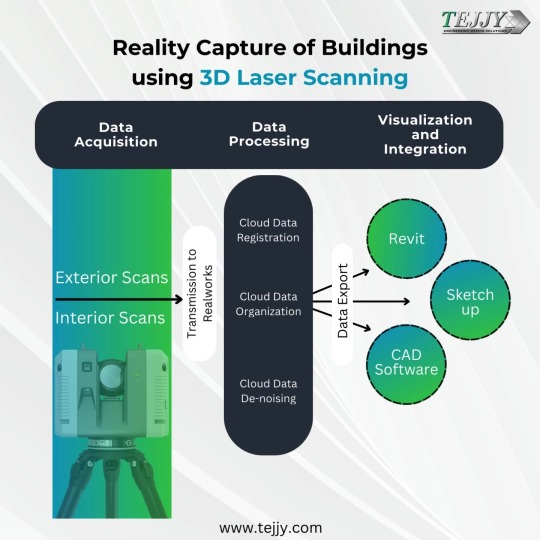
Reality capture, also known as 3D laser scanning, is a powerful technology used to create highly detailed and accurate digital representations of buildings.
Applications of Reality Capture in Buildings:
Construction: Creates as-built models for verification, clash detection (identifying conflicts between building elements), and progress monitoring.
Renovations: Provides accurate documentation of existing conditions before renovation work begins.
Facility Management: Enables efficient space planning, maintenance scheduling, and asset tracking.
Historic Preservation: Creates digital archives of historical buildings for preservation purposes.
Overall, reality capture with 3D laser scanning offers a faster, more accurate, and more efficient way to capture and document building data for various applications.
0 notes
Text
Exploring the Diverse Landscape of BIM Software in Construction: A Comprehensive Guide
Introduction: In the ever-evolving field of construction, Building Information Modeling (BIM) has emerged as a transformative technology that revolutionizes the way buildings are designed, constructed, and managed. BIM software plays a pivotal role in enhancing collaboration, improving efficiency, and minimizing errors throughout the construction process. This article delves into the various…
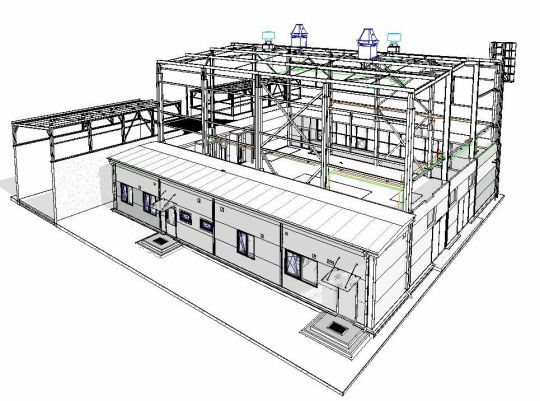
View On WordPress
#architectural design software#as-built documentation#BIM model accuracy#BIM software#Building Information Modeling#collaboration platforms#construction industry advancements#construction management software#construction project efficiency#Construction Technology#cost estimation tools#facility maintenance optimization#facility management solutions#laser scanning technology#LiDAR applications#MEP systems modeling#point cloud integration#project stakeholders collaboration#real-time coordination#structural engineering tools#sustainable building practices
0 notes
Text
10 Essential Steps in Architectural Design Processes
Entering the architectural design process is like crossing the threshold into a domain where creativity and precision intertwine, sculpting the tangible tapestry of our surroundings. Architects, as the orchestrators of this transformative journey, navigate through a symphony of ideas, analyses, and meticulous planning to mold abstract concepts into tangible structures. This exploration invites us to peer into the intricacies of architectural creation, where every stroke of the design process unfolds a narrative, weaving together the aspirations of visionaries with the pragmatism of builders.
Ideation: Nurturing Creative Seeds
The journey commences with ideation, where architects nurture creative seeds. Brainstorming sessions and conceptual refinements lay the groundwork for the unique identity and purpose of the project.
Site Analysis: The Canvas of Creation
Before pen meets paper, architects conduct a comprehensive site analysis. Understanding topography, climate, and surroundings provides the canvas upon which the architectural narrative unfolds.
Preliminary Design: Sketching the Blueprint
Sketching transforms abstract ideas into tangible forms. Architects translate concepts into preliminary designs, exploring spatial arrangements, aesthetics, and functional elements that define the project's essence.
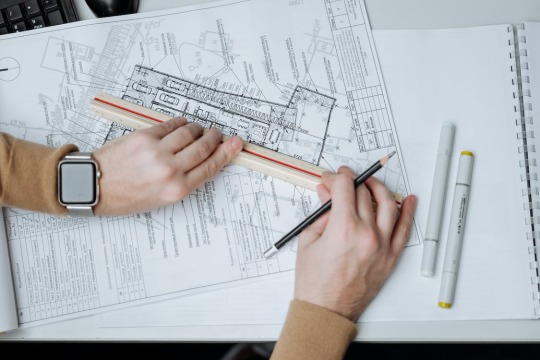
Design Development: Refining the Blueprint
Building upon preliminary designs, architects enter the design development phase. Details are fine-tuned, functional requirements are addressed, and client feedback is incorporated to create a comprehensive blueprint guiding the project.
Building Information Modeling (BIM): The Digital Prototype
Leveraging technology, architects utilize Building Information Modeling (BIM) for detailed 3D models. BIM acts as a digital prototype, facilitating virtual exploration, enhancing collaboration, and providing a comprehensive understanding of spatial dynamics.
Regulatory Compliance: Navigating Codes and Regulations
Architects navigate through a complex web of building codes and zoning regulations. Ensuring compliance is pivotal for obtaining necessary permits and approvals, requiring an understanding of legal requirements that shape the design.
Material Selection: Balancing Aesthetics and Functionality
The selection of materials is an art. Architects consider aesthetic preferences, durability, sustainability, and budget constraints when choosing materials, striking a delicate balance between visual appeal and functional robustness.
Construction Documents: Blueprint for Builders
Detailed construction documents serve as a comprehensive guide for builders. Architects meticulously prepare technical specifications, plans, and essential details, ensuring the accurate execution of the design during the construction phase.
Collaboration with Engineers and Contractors: Synergy in Construction
Close collaboration with structural engineers and contractors is paramount. Architects bridge the gap between design and construction, ensuring the envisioned design is translated accurately into the physical structure.
Realization and Beyond: Witnessing the Vision Materialize
The culmination of the architectural design process is the realization of the project. Architects oversee construction, address challenges, and witness the transformation of conceptualized visions into physical realities. Post-occupancy evaluations often follow, ensuring continued success in meeting user needs.
Must Read: The Essential Guide To Architectural Design Processes
Conclusion
The architectural design process unfolds as a dynamic symphony, where architects seamlessly blend creativity, technical expertise, and collaboration. From inception to realization, architects navigate meticulous stages that shape the built environment, leaving an indelible mark on the world we inhabit.
2 notes
·
View notes
Text
Hello there, readers! Today, we will talk about another great plugin for SketchUp ? it is called PlusSpec and it is truly a thing of beauty.
PlusSpec was built with mostly residential construction in mind, however, it is quite capable at other types of building work as well. Partnered with RubySketch, PlusSpec is a game-winner in BIM and VDC market. Bring on the architect wars!
What is PlusSpec for SketchUp Pro
The main idea behind PlusSpec is to convert SketchUp into a fully capable Virtual Design and Construction (VDC) app. PlusSpec lets you create constructible designs and get the documentations to build them. It is a magic app that snaps together CAD and BIM, 3D design and 2D documentation, VDC and Estimation altogether!
With an astonishing turn, PlusSpec will allow you to use readily available building material specifications from real manufacturers. This information is available in the form of materials with embedded data, and when you use those materials in SketchUp, you add values automatically to your model.
Read more
2 notes
·
View notes
Text
Architectural Drafting is Key for Construction Drawings & As built Drawings

In the dynamic realm of construction, precision and clarity are of paramount importance. Behind every structurally sound and aesthetically pleasing building lies a meticulously crafted blueprint. Architectural drafting serves as the bedrock upon which these blueprints, construction drawings, and as built drawings are created. With the advent of Computer-Aided Design (CAD) services and Building Information Modeling (BIM) services, architectural drafting has undergone a transformative evolution, revolutionizing the construction industry.
The Essence of Architectural Drafting:
Architectural drafting is the process of creating detailed technical drawings that serve as the visual roadmap for constructing a building. These drawings encompass a wide range of information, including dimensions, materials, layout plans, elevations, sections, and intricate details. In essence, architectural drafting is the language through which architects, engineers, and contractors communicate their vision and collaborate to bring structures to life.
Precision and Clarity:
The success of any construction project hinges on accuracy. Construction drawings derived from architectural drafting must be precise down to the last millimeter, leaving no room for ambiguity. A misplaced dimension or an unclear annotation could lead to costly errors during construction, compromising both safety and budget. Architectural drafting ensures that every stakeholder, from architects to construction workers, shares a common understanding of the project's intricacies.
The Evolution of CAD Services:
The introduction of CADservices revolutionized architectural drafting. Traditional manual drafting was time-consuming and prone to errors. CAD software streamlined the drafting process, enabling professionals to create, edit, and replicate drawings with unprecedented efficiency. Dimensions could be automatically updated, and intricate designs could be visualized in 3D, providing a more immersive understanding of the project.
CAD services not only expedited drafting but also enhanced collaboration. Professionals from different disciplines could work on the same digital platform, ensuring seamless integration of architectural, structural, and mechanical designs. This level of coordination minimizes conflicts and optimizes the construction process.
BIM Services: A Paradigm Shift:
While CAD services brought efficiency to drafting, Building Information Modeling (BIM) services marked a paradigm shift in how construction projects are conceptualized, designed, and executed. BIM extends beyond mere 3D modeling; it involves the creation of a comprehensive digital representation of a building's physical and functional characteristics.
BIM-enabled architectural drafting transcends static drawings. It encapsulates information about materials, costs, scheduling, and even environmental impact. This holistic approach allows stakeholders to visualize the building's entire lifecycle, from initial design to construction, operation, and maintenance.
One of the key benefits of BIM services is its impact on as built drawings. As built drawings represent the final state of a building, including any modifications or deviations from the original plan that occurred during construction. With BIM, as built drawings are not mere post-construction documentation; they are a dynamic record that captures real-time changes and forms a valuable resource for future renovations or repairs.
The Symbiotic Relationship: Architectural Drafting, CAD, and BIM:
Architectural drafting, CAD services, and BIM services form a symbiotic relationship that empowers the construction industry. CAD services provide the agility and accuracy required for efficient drafting, allowing professionals to create intricate designs with ease. BIM services elevate this process by introducing collaboration and information-sharing, resulting in a digital twin of the physical building.
The marriage of CAD and BIM ensures that as built drawings are accurate reflections of the constructed building. Deviations from the original plan can be promptly updated in the digital model, maintaining the accuracy of the as-built documentation. This synergy minimizes the gap between the design intent and the final product, offering architects, contractors, and building owners a comprehensive overview of the structure.

In the ever-evolving landscape of construction, architectural drafting remains the linchpin of accurate construction drawings and as-built documentation. The integration of CAD services and BIM services has transformed this once manual process into a dynamic, collaborative, and technology-driven endeavor. The precision offered by architectural drafting, bolstered by CAD's efficiency and BIM's comprehensive approach, ensures that construction projects are executed with meticulous accuracy. As we look to the future, the continued evolution of architectural drafting alongside advancing technologies promises even greater strides in the construction industry, solidifying its foundation on a bedrock of precision and clarity.
2 notes
·
View notes
Text
MEP BIM Engineering Detailing Services in Agra, India

Steel Construction Detailing is leading the good services of MEP BIM Outsourcing Services. Our MEP BIM Detailing Services focus on precision and accuracy, ensuring that every component of the system is meticulously represented in the digital model. Our team of skilled professionals utilizes advanced BIM tools to create detailed, 3D models that facilitate a better understanding of the MEP Systems. Our MEP BIM CAD Drawing Services encompass a comprehensive range of drawings, from schematic diagrams to detailed construction documentation. Contact us today to discuss your MEP BIM CAD Services project and learn how we can contribute to its success.
MEP BIM Services Includes :
- MEP Shop Drawings - 2D CAD drafting and detailing - MEP Fabrication Drawings - As-Built Drawings - Clash Detection - Quantity Take-offs
URL : https://www.steelconstructiondetailing.com/mep-bim-service.html
#MEPBIMServices#MEPBIMServicesFlorida#MEPBIMCoordinationServices#MEPBIMDraftingServices#MEPBIMModelingServices#MEPFabricationDrawings#MEPCoordination#MEPEngineeringServices#MEPBIMDetailingServices#RevitMEPBIMModelingServices#CADServices#SteelCAD
1 note
·
View note
Text
Streamlining Solar Permits: Manual to Automated Design
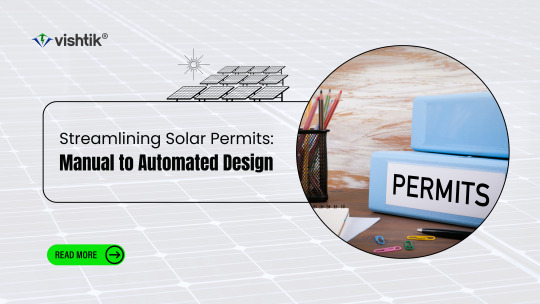
You probably remember those days when designing the solar system felt like completing a puzzle without all the pieces? Solar engineers had to piece together plans manually and navigate code requirements by hand, all while using outdated workflows.
Thankfully, those days are behind us.
Solar energy is set for exceptional growth as technology advances, investments increase, and strong policies drive the industry forward. The U.S. solar industry is on track for another major leap, with projected growth of 45% by 2025, fueled by rising demand for solar and tax incentives. But with that growth comes pressure, solar engineering firms now face the challenge of delivering code-compliant, accurate permit designs faster than ever before.
The traditional approach to solar permit design, largely manual and fragmented, simply can’t keep up; why? Because it’s slow, prone to human error, and difficult to scale. But now thanks to these game changer advanced tools and AI. The manual design process involves detailed drawings and calculations, while automated systems, such as SolarAPP+, automate the process by checking for qualifying permits based on code compliance.
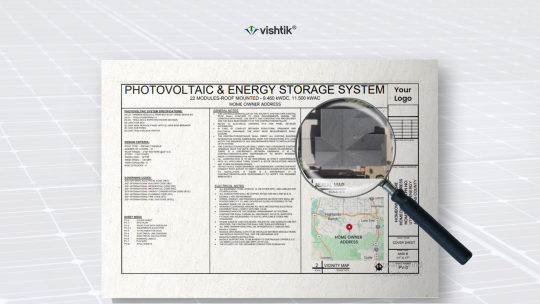
Understanding Solar Permit Design!
Solar permit is a document issued by the local government that authorizes the installation of a solar panel system in a particular location. This document ensures that the solar system follows area’s all safety and building codes. It involves submitting detailed plans including site layouts, electrical schematics, and structural calculations to local authorities (AHJs) for approval. These plans must comply with codes like the 2023 NEC, IBC, and local fire codes.
Impact of Advanced Tools: Whenever we discuss the impact of something, we always evaluate it according to who it has improved and these tools streamline the design process, improve accuracy, and enhance overall efficiency, leading to significant cost reductions. Photovoltaic (PV) design software tools are specialized applications for planning and simulating PV systems. From site assessment to system design to performance simulation and financial analysis, they’re there to help. Using advanced algorithms, geographic data, and solar irradiance information, these tools create precise and optimized solar PV systems.
Automated Solar Design Software: Compared to manual processes, these modern tools like Aurora Solar, Helioscope, and PVsyst automate system layout, shading analysis, and energy modeling—reducing design time by up to 80%.
AI-Powered Layout Optimization: Tools such as SolarDesignTool and Helioscope use AI and satellite data (including LIDAR) to auto-generate optimal panel layouts and string sizing, reducing revisions by nearly 60%.
Real-Time Code Compliance Engines: Tools like Bluebeam Revu combined with plug-ins or built-in NEC 2023 code checkers (e.g., in Aurora Solar) catch compliance issues early, cutting permit rejections by 50%.
Cloud-Based Collaboration Platforms: Cloud solutions such as Autodesk BIM 360, Trimble Connect, and PlanGrid enable real-time collaboration between engineers, installers, and AHJs—speeding up approval cycles by days.
Electrical & Structural Calculation Tools: Automated calculators embedded in tools like PV*Sol and EasyPower simplify voltage drop, conductor sizing, and load calculations—improving accuracy by 30%.
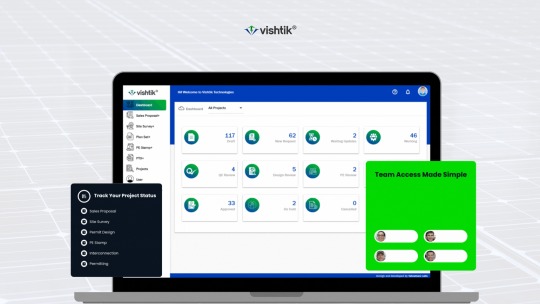
How Vishtik Is Driving Innovation:
Vishtik, combine engineering expertise with these leading-edge tools to deliver faster, accurate, and fully compliant solar permit designs by using Aurora Solar and Helioscope for AI-assisted layout and string design, by Integrating Bluebeam Revu and automated NEC code checkers for compliance validation, by employing AutoCAD and Autodesk BIM 360 for structural and electrical plan modeling, by leveraging web platform for real-time permit submission and project tracking, by continuously optimizing workflows to reduce turnaround times by up to 40%, and by harnessing these advanced technologies, Vishtik helps solar developers accelerate projects, reduce costly revisions, and improve documentation quality.
Conclusion
As the solar market is set to grow 45% in 2025, the requirement for faster, accurate permit design will be greater than ever. Advanced software and AI-driven tools are revolutionizing solar engineering—delivering efficiency, precision, and scalability. Vishtik is proud to lead this change, providing next-generation solar permit design services powered by the latest technology.
Ready to transform your solar permit process with industry-leading tools? Contact Vishtik today and be smarter, faster, and cleaner.
Read More: https://vishtik.com/13994-2/
0 notes
Text
Top CAD Drafting Services in the USA for Precision Designs

In today’s fast-paced design and construction landscape, precision is essential. A small error in a technical drawing can result in expensive rework, project delays, or compliance issues. That’s why more businesses across the United States are turning to professional CAD Drafting Services transforming concepts into detailed, actionable designs that drive results.
From architectural layouts and mechanical components to electrical schematics and HVAC systems, CAD (Computer-Aided Design) plays a critical role in nearly every technical project. This blog explores the value of CAD drafting, what makes a top-tier service provider, and why Asset-Eyes is a trusted partner for precision CAD drafting services across the USA.
What Are CAD Drafting Services?
CAD drafting services involve the use of computer software to create detailed technical drawings and schematics. These drawings can be in 2D for construction and permit sets, or in 3D for modeling, visualization, and simulation. CAD drafters convert sketches, handwritten notes, or design concepts into structured digital files that guide construction, manufacturing, or engineering processes.
These services are widely used in:
Architecture and construction
Mechanical and HVAC Equipment Design
Electrical and civil engineering
Product and industrial design
Infrastructure development
CAD drawings ensure accuracy, consistency, and compliance with national and industry-specific standards.
Why Precision Drafting Matters
Accurate CAD drafting serves as the foundation for successful projects. Benefits include:
Fewer on-site errors and construction conflicts
Faster approval from building authorities
Accurate cost estimation and material planning
Enhanced communication among project stakeholders
Improved overall project efficiency
Without precision drafting, even the most innovative design ideas may fall short during execution.
What Makes a CAD Drafting Service “Top-Tier”?
1. Technical Expertise
Leading firms employ certified and experienced drafters who understand the specific requirements of architecture, MEP (Mechanical, Electrical, Plumbing), structural systems, and product design.
2. Software Proficiency
Top providers work across platforms like AutoCAD, Revit, SolidWorks, Inventor, SketchUp, and MicroStation to suit client preferences and project demands.
3. Quality Assurance
A strong quality control process ensures accuracy, adherence to standards (such as ASME, ANSI, AIA), and consistent output.
4. BIM and 3D Capabilities
Beyond 2D layouts, top firms deliver 3D models and Building Information Modeling (BIM) services, helping clients visualize systems and detect clashes before construction begins.
5. Quick Turnarounds
Speed without sacrificing quality. Scalable teams and streamlined processes allow top firms to meet tight deadlines.
6. Industry Versatility
The ability to work across sectors from residential construction to high-end industrial design demonstrates flexibility and deep domain knowledge.
Key CAD Drafting Services in Demand
2D CAD Drafting
Floor plans, site plans, elevations, and sections
MEP schematics and layouts
Permit and construction documentation
3D CAD Modeling
Parametric product models
Structural and architectural 3D views
Walk-through visualizations
Architectural Drafting
Interior and exterior detailing
Fire escape plans and code-compliant layouts
As-built drawing updates
Mechanical and HVAC CAD Drafting
Equipment layouts, duct routing, and mechanical room detailing
Piping, valves, and system diagrams
Fabrication and assembly drawings
Electrical Drafting
Power and lighting layouts
Panel schedules and circuiting
Low-voltage system schematics
Why Businesses in the USA Are Outsourcing CAD Drafting
Outsourcing CAD drafting brings several advantages:
Reduced operational costs
Access to specialized talent without full-time hiring
Faster project cycles
Enhanced accuracy through experienced professionals
Ability to handle fluctuating project loads
Outsourcing does not mean compromising on quality. In fact, with the right partner, quality often improves.
Asset-Eyes: Your Trusted CAD Drafting Partner
Asset-Eyes delivers high-precision CAD drafting services tailored to meet the specific needs of clients across the United States. Whether you are an architect, contractor, HVAC engineer, or product manufacturer, we help you convert your vision into buildable, manufacturable, and code-compliant drawings.
Our Core Offerings
2D drafting and 3D modeling
HVAC and MEP design support
Revit and BIM coordination
Structural and architectural detailing
Mechanical and fabrication drawing sets
Paper-to-CAD conversions
What Sets Asset-Eyes Apart
Proficiency in all major CAD platforms including AutoCAD, SolidWorks, Revit, and Inventor
Detailed quality checks before final delivery
On-time submissions with transparent communication
Custom solutions aligned with your project standards and specifications
Competitive pricing for businesses of all sizes
When you choose Asset-Eyes, you're partnering with a team that values accuracy, reliability, and long-term relationships.
Case Studies: Our Impact in Action
Commercial HVAC Layout for East Coast Office Tower
Asset-Eyes created complete 2D and 3D HVAC layout drawings for a 14-story office building, coordinating with plumbing and electrical systems to avoid clashes. Our fast turnaround enabled the contractor to meet permit deadlines without delay.
SolidWorks Modeling for Manufacturing Client
A Midwest-based industrial equipment firm needed over 200 fabrication-ready part drawings within two weeks. Our team used SolidWorks to deliver fully toleranced, assembly-linked files that moved straight to production.
Choosing the Right CAD Partner
Not all drafting providers offer the same level of service. When selecting a CAD partner, consider:
Experience in your specific industry
Use of appropriate software tools
Quality control processes
Speed and reliability
Support for revisions and long-term collaboration
Asset-Eyes meets all of these criteria, making us a reliable drafting extension of your in-house team.
How to Start Working with Asset-Eyes
We make it easy to begin:
Send Us Your Requirements Share sketches, markups, or design goals.
Get a Fast, Transparent Quote We review the scope and provide a competitive estimate.
Project Kickoff and Drafting Begins You get updates and previews throughout the process.
Final Delivery and Revisions Receive your CAD files in DWG, DXF, PDF, or other formats.
Ongoing Support Whether you need future edits, new drawings, or full documentation sets, we’re here to help.
Final Thoughts
As projects grow in complexity, the demand for high-precision CAD drafting continues to rise. Companies across the United States are turning to professional drafting firms not just for drawings, but for dependable support, quality assurance, and speed.
Asset-Eyes is proud to deliver CAD drafting services that meet these needs with accuracy, efficiency, and a commitment to your success.
If you're looking for a trusted CAD partner to support your next design or construction project, connect with Asset-Eyes today. Let’s bring clarity and precision to your work, one CAD Drawing Services at a time.
#cad drafting services#solidworks design#general assembly drawing#cad drawing services#HVAC equipment design#HVAC CAD drafting
0 notes
Text
Architectural Laser Scanning for Building Renovation
3D Scanning Technology Revolutionizing Renovation Projects
In recent years, 3D laser scanning has become a game-changer for building renovation. By capturing highly accurate digital records of existing structures, this advanced technology streamlines the renovation process from planning through construction.
Architectural laser scanning not only accelerates project timelines—reducing them by up to 80%—but also plays a crucial role in preserving historical architectural details. Its precision and efficiency are redefining how architects, engineers, and contractors approach renovation projects.
Understanding Laser Scanning Technology
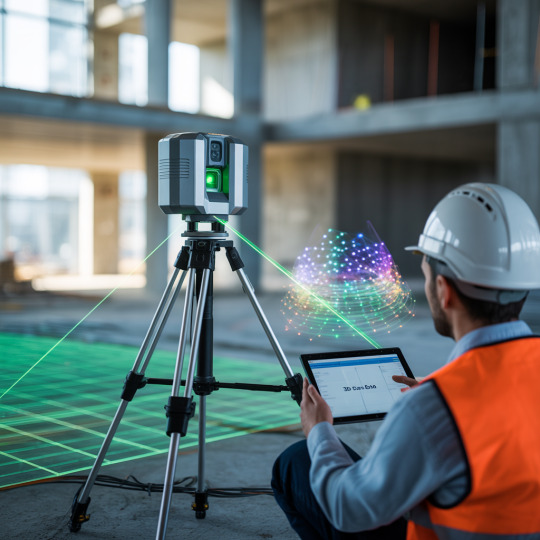

Laser scanning technology operates by emitting laser beams that reflect off surfaces and return to the scanner, capturing millions of data points known as "point clouds."
These dense point clouds represent the geometry of the scanned environment in 3D with a typical accuracy range of 2-3mm.
Key capabilities include:
Capturing comprehensive spatial relationships, material conditions, and architectural features.
Recording manufacturer-specific details such as door and window dimensions, HVAC equipment, and more.
Seamless integration with BIM (Building Information Modeling) and CAD platforms, enhancing digital workflows.
Delivering rich geographic and architectural data used for precise modeling and analysis.
Key Benefits for Renovation Projects
Laser scanning offers several distinct advantages over traditional surveying methods, especially for renovation and retrofit projects:
Enhanced Safety: Reduces the need for physical access to hazardous or hard-to-reach areas.
Speed: Approximately 40% faster than traditional hand-measuring or manual survey methods.
Accuracy: Delivers near-exact documentation of existing conditions, essential for accurate design and construction.
Historical Preservation: Ideal for capturing intricate details in heritage buildings, ensuring their preservation during renovations.
Reduced Errors: Minimizes on-site measurement mistakes, reducing costly rework.
Enhanced Project Planning
High-resolution point cloud data enables architects and engineers to begin the renovation process with a complete understanding of the existing structure. Benefits include:
Detailed site analysis with reliable structural data.
Insight into existing limitations, constraints, and irregularities.
Early detection of structural issues, such as sagging beams or misaligned foundations.
Creation of accurate as-built documentation for use across design disciplines.
Helps reduce rework and avoid costly surprises during construction.
Streamlining Design & Construction
One of the major strengths of architectural laser scanning is its ability to streamline design and construction coordination:
Seamless integration with BIM and CAD software platforms like Revit, AutoCAD, and Navisworks.
Provides a shared, accurate data environment for all stakeholders to collaborate.
Reduces change orders by up to 35% by ensuring that the design is aligned with real-world site conditions.
Facilitates complex structural modifications with confidence and precision.
Speeds up decision-making by providing detailed visual references and data-backed models.
Quality Assurance & Compliance
Laser scanning plays a pivotal role in quality control and ensuring compliance during renovation:
Verifies that construction aligns with architectural and structural specifications.
Helps teams ensure compliance with building codes and regulations.
Accurately documents as-built conditions for comparison against original designs.
Detects deviations or discrepancies between planned and actual structures.
Supports structural analysis and validation, ensuring safety and long-term performance.
Case Study: Historical Building Preservation
A notable application of laser scanning is in the renovation of historical buildings:
Enables precise documentation of delicate or intricate architectural features like moldings, columns, and cornices.
Supports accurate alignment of new structural elements with the original architecture.
Offers digital preservation of heritage details, ensuring they are retained for future generations.
Allows for virtual design testing using 3D models before making any physical changes.
Minimizes on-site disruption, making the scanning process less invasive than traditional surveys.
Implementation Process
The implementation of a laser scanning workflow typically includes the following steps:
Initial Site Assessment: Determines scanning scope and project requirements.
Scanner Placement Strategy: Ensures full coverage of the building, interior and exterior.
Data Collection & Point Cloud Generation: Field scanning produces millions of precise data points.
Data Processing & Integration: Point clouds are cleaned, registered, and integrated into BIM or CAD systems.
Ongoing Reference: The scan data remains available throughout the renovation to resolve design or construction queries.
ROI & Cost Benefits
Architectural laser scanning offers an impressive return on investment for renovation projects:
Reduces overall project timelines by up to 30%, allowing quicker project delivery.
Helps avoid expensive design changes mid-project by catching issues early.
Cuts labor costs for initial surveying by approximately 50%.
Prevents costly rework by providing exact existing conditions before construction starts.
Creates lasting digital documentation, useful for ongoing maintenance and facility management.
Conclusion: Transforming Renovation Projects
Architectural laser scanning is transforming the renovation landscape by introducing a new level of accuracy, efficiency, and insight. By providing:
Unprecedented documentation precision
Improved decision-making based on real-world data
Clear, consistent information for all stakeholders
Significant reductions in time and cost
Preservation of both structural integrity and aesthetic value
…it is rapidly becoming an essential tool in modern building renovation. Whether working on a historical structure or a commercial upgrade, 3D laser scanning ensures the highest level of planning, execution, and project success.
#building design#architecture#architectural laser scanning#historical structure#3d laser scanning#as built documentation#bim#building information modeling
0 notes
Text
MEP Coordination: Complete Building Project Guide

In modern construction, MEP Coordination is the backbone of project efficiency, clash-free execution, and cost control. Whether you're managing residential, commercial, or industrial developments, integrating MEP systems effectively is essential for seamless project delivery.
This guide dives deep into MEP Coordination, its impact, and how services like BIM MEP coordination and MEP clash detection services are transforming the building industry.
What is MEP in Construction?
What is MEP in construction? It refers to the integration of Mechanical, Electrical, and Plumbing (MEP) services that keep a building functional. MEP systems work together to provide HVAC, power, water, fire protection, and other essential functions.
Without proper coordination, these systems can interfere with each other, leading to delays, redesigns, or costly rework.
Learn more about how MEP Services play a vital role in BIM and the design phase.
Why is MEP Coordination Important?
MEP Coordination ensures that each system fits harmoniously within the building’s architecture and structure. By using BIM MEP coordination and 3D MEP coordination tools, designers and contractors can visualize spatial relationships, detect clashes, and avoid installation conflicts.
Key Benefits:
Reduces rework and change orders
Prevents system clashes before construction
Saves time and resources
Improves safety and efficiency
Explore how MEP clash detection services save time and money through early conflict resolution.
Stages of MEP Coordination in Construction
1. MEP Design Integration
Incorporates architectural, structural, and MEP services into a single coordinated model. MEP BIM modeling services allow teams to identify potential issues early.
2. 3D MEP Coordination
Engineers use 3D models to simulate real-world installation. This stage improves collaboration and accuracy.
3. MEP Clash Detection Services
Advanced clash detection tools flag interference between systems. These are then resolved digitally, avoiding costly field corrections.
4. Constructability Review
The BIM model is validated for constructability and feasibility, ensuring that designs can be efficiently implemented on-site.
BIM MEP Services and Their Role
BIM MEP services enhance the visibility and control over MEP components throughout the lifecycle of a building. From early design to as-built documentation, MEP BIM modeling services ensure accurate execution.
Some advantages include:
Centralized data and collaboration
Automated clash detection
Faster approvals and fewer RFIs
Improved asset management post-construction
For more insight, read How MEP Design and Drafting Improve Building Efficiency.
Choosing the Right MEP Coordination Services
Partnering with the right MEP coordination services provider ensures reliable, coordinated models, lower project risk, and optimized field performance.
Look for:
Experience in BIM-based MEP coordination
Use of advanced software for 3D MEP coordination
Proven track record in MEP clash detection services
Integration with other trades and disciplines
Conclusion: Get Your MEP Coordination Right with SmartCADD
MEP Coordination is no longer optional—it’s essential for delivering high-quality, conflict-free construction projects on time and within budget. By integrating BIM MEP services, leveraging MEP BIM modeling, and implementing robust MEP clash detection services, you can avoid delays, reduce waste, and streamline your building process.
At SmartCADD, we specialize in delivering end-to-end MEP coordination services, combining expertise, precision, and cutting-edge technology to bring your designs to life without conflicts.
Contact SmartCADD today to learn how our expert team can help optimize your MEP systems and transform your next construction project.
FAQs
1. What is MEP coordination and why is it important in construction? MEP coordination is the process of aligning mechanical, electrical, and plumbing systems within a building design to prevent clashes. It's crucial for reducing on-site issues, saving time, and ensuring seamless integration across trades.
2. How does BIM support MEP coordination? BIM (Building Information Modeling) allows for 3D visualization, clash detection, and accurate documentation of MEP systems. It enhances collaboration and minimizes construction risks through detailed planning and simulation.
3. What services are included in MEP coordination? MEP coordination typically includes MEP BIM modeling, 3D coordination, clash detection, constructability reviews, and interdisciplinary collaboration to deliver accurate, conflict-free building systems.
#MEP Coordination#bim mep services#what is mep in construction#MEP Services#mep coordination services#bim mep coordination#3d mep coordination#mep bim modeling services#mep clash detection services
0 notes
Text
Scan to BIM Services in USA | Point Cloud to Revit by Rvtcad
Rvtcad provides reliable Scan to CAD and Scan to BIM services, successfully delivering over 300 projects annually. We accurately convert Point Cloud data into detailed 3D BIM models and 2D CAD drawings, including high-detail Revit MEP models up to LOD 500. Our experienced team specializes in creating precise as-built documentation, supporting renovation and refurbishment projects worldwide. We work with surveyors, architects, engineers, contractors, and BIM consultants using advanced scanners like Faro, Leica, Matterport, NavVis, Trimble, and GeoSLAM. Our Scan to BIM services are trusted across the USA, UK, Europe, Australia, and over 30 countries globally.
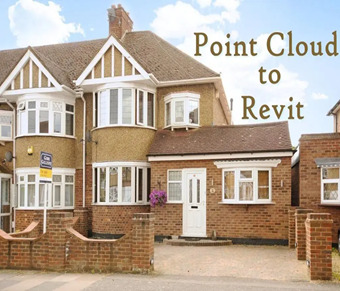
What is Scan to BIM?
Scan to BIM (Building Information Modeling) is the process of capturing existing buildings, structures, or sites through advanced 3D laser scanning technology and converting that data into a highly detailed, intelligent 3D model using software like Autodesk Revit.
The laser scanner collects millions of precise data points — known as a Point Cloud — which forms the foundation for developing an as-built, clash-free, and editable BIM model.
Simply put: Scan to BIM turns real-world spaces into digital models, helping you plan, renovate, manage, and build — smarter.
Why Scan to BIM is a Game-Changer for USA Projects
Across the United States, the demand for precision, speed, and digital workflows is rising in the construction sector. Scan to BIM offers unmatched advantages:
✅ Highly Accurate As-Built Models — Capture exact site conditions to millimeter precision. ✅ Reduced Project Risk — Minimize errors, rework, and costly delays with reliable data. ✅ Streamlined Renovations & Retrofits — Ideal for modifying or upgrading existing structures. ✅ Improved Design Coordination — Centralized models enhance collaboration across teams. ✅ Efficient Facility Management — Maintain and manage buildings using intelligent digital twins. ✅ Faster, Smarter Decision-Making — Empower your team with accurate, real-world insights.
Point Cloud to Revit — What We Deliver
At Rvtcad, we convert Point Cloud data into detailed, intelligent Revit models that meet the highest industry standards. Our models are created to your exact specifications, ensuring:
✔ Architectural Modeling ✔ Structural Modeling ✔ MEP (Mechanical, Electrical, Plumbing) Modeling ✔ LOD (Level of Detail) options: LOD 100 to LOD 400+ ✔ Clash Detection Ready Models ✔ As-Built Documentation
Our Comprehensive Scan to BIM Services (USA)
We offer a full suite of Scan to BIM and Point Cloud to Revit services tailored for the US market:
3D Laser Scanning
On-site laser scanning by expert teams using cutting-edge equipment.
High-density Point Cloud data collection for buildings, infrastructure, and complex sites.
Point Cloud to Revit Conversion
Accurate Revit models for architecture, structure, and MEP systems.
Models developed to client-specific LOD and project standards.
As-Built BIM Modeling
Reliable as-built documentation for renovations, restoration, and facility management.
Scan to 2D Drawings
Generation of precise floor plans, sections, and elevations from Point Cloud data.
MEP BIM Modeling
Comprehensive MEP models for accurate coordination and clash detection.
Industries We Serve Across the USA
Our BIM expertise supports a wide range of projects, delivering accurate Scan to BIM, CAD, and MEP modeling solutions for:
🏢 Commercial Buildings 🏠 Residential Developments 🏗 Infrastructure, Highways & Bridge Projects 🏛 Historic Preservation & Heritage Buildings ⛪ Church & Religious Structures 🏭 Industrial & Manufacturing Facilities 🏥 Healthcare & Hospital Projects ✈ Airports & Transportation Hubs 🏫 Education & Institutional Buildings 🔧 MEP Systems, Coordination & As-Built Modeling
Why Rvtcad is a Trusted Scan to BIM Partner in the USA
✔ Deep USA Market Knowledge — We deliver models that align with American building codes and standards. ✔ Experienced BIM Specialists — Our team combines technical precision with project expertise. ✔ Tailored Solutions — Every project receives a customized approach based on your needs. ✔ Rapid Turnaround Times — Fast, efficient service without compromising quality. ✔ Competitive, Transparent Pricing — High-quality BIM services that respect your budget. ✔ Strict Data Confidentiality — Your project data is protected with top-level security protocols.
Our Process — Seamless, Efficient, Reliable follow a proven, client-friendly workflow to ensure project success:
Step 1: Site Survey & Laser Scanning experts conduct precise 3D laser scans of your building or site.
Step 2: Point Cloud Generation Raw scanned data is processed into a usable, high-density Point Cloud format.
Step 3: Revit Model Development BIM team transforms the Point Cloud into a highly accurate, clash-free Revit model.
Step 4: Quality Control & The final model undergoes rigorous quality checks before secure delivery.
Applications of Scan to BIM in the USA. Our Scan to BIM solutions support:
✔ Renovation & Retrofitting ✔ New Construction Planning ✔ Historic Building Preservation ✔ Clash Detection & Coordination ✔ Facility & Asset Management ✔ Space Optimization & Interior Design ✔ Infrastructure Upgrades ✔ Construction Documentation
Partner with Rvtcad — Your Scan to BIM Experts. You need reliable, accurate, and efficient scan-to-BIM or Point cloud-to-Revit services in the USA Rvtcad is your go-to partner. With our technical expertise, USA project experience, and commitment to excellence, we help you deliver projects on time, on budget, and without surprises.
#scan to bim#point cloud to bim#3d laser scanning#scan to revit#bim laser scanning#point cloud to cad#as-built drawing#bim services#as-built drawings#scan to cad
0 notes
Text

📍Bring Your Built Environment to Digital Life
Scan to BIM Services by Tesla CAD Australia
At Tesla CAD, we specialize in converting point cloud data into accurate, information-rich BIM models. Whether it is a renovation, retrofit, facility management, or construction project—our Scan to BIM solutions ensure precision, compliance, and clarity across architectural, structural, and MEP disciplines.
✅ Supports all major scan formats: .RCP, .E57, .PTS, .RCS
✅ Delivers LOD 100–500 models as per project needs
✅ Ideal for as-built documentation, clash detection, and design coordination
✅ Backed by years of experience and global project expertise
📐 Build smarter. Renovate faster. Coordinate better.
🔗 Explore Our Services on our page.
📞 Get in touch: +61 3 9028 2768 | 📧[email protected]
#ScanToBIM#PointCloudToBIM#AsBuiltModels#BIMModeling#TeslaCADAustralia#DigitalConstruction#ClashDetection#BIM#AEC#Architecture#Engineering#Construction#ConstructionTech
0 notes